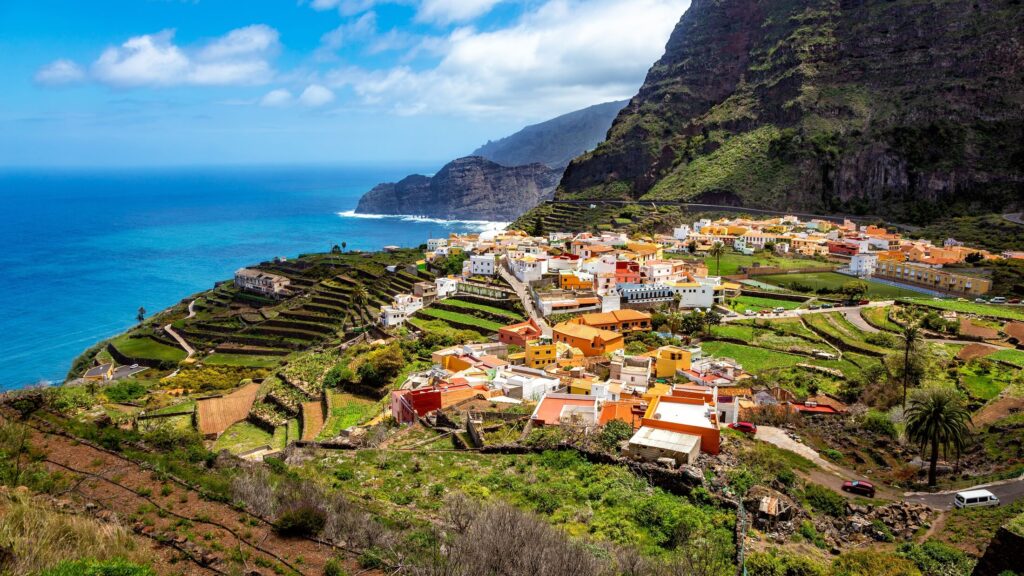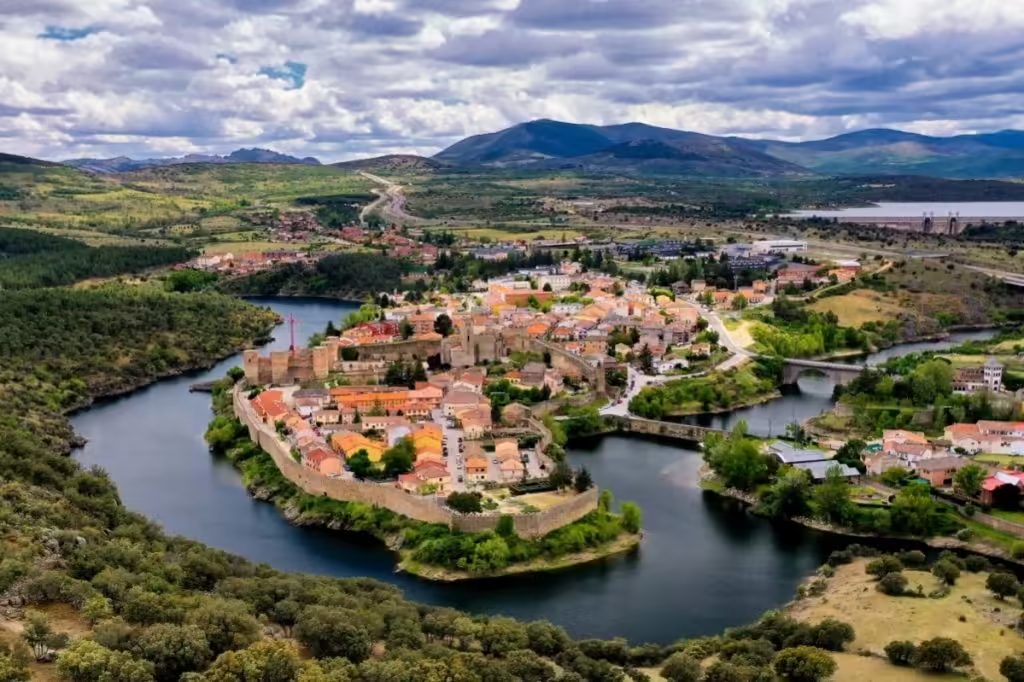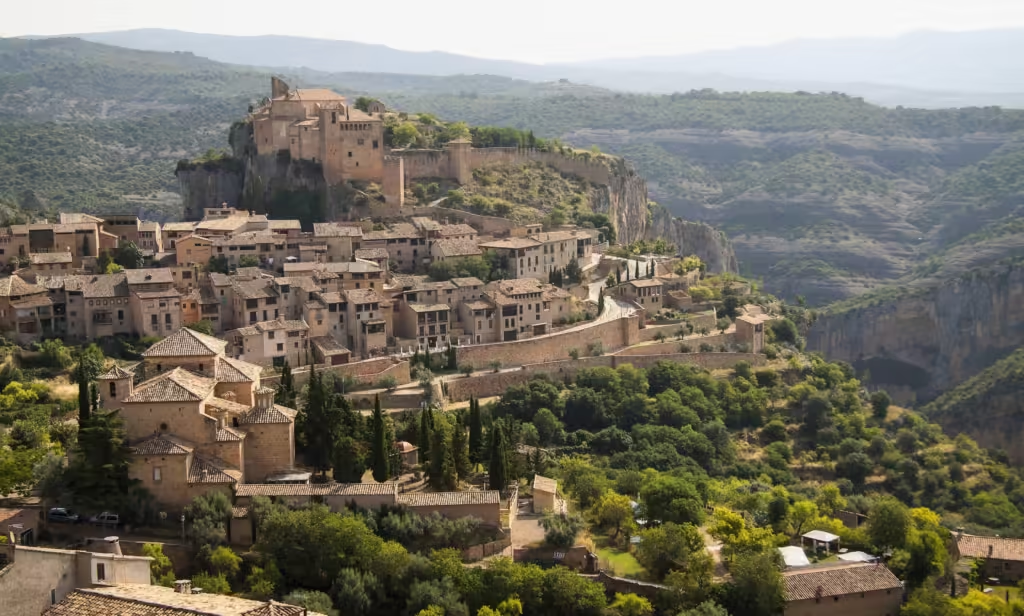La Gomera: The Ultimate Tourist Guide to the Hidden Gem of the Canary Islands
La Gomera is a lesser-known island in Spain’s Canary Islands. It offers a peaceful retreat for travelers seeking pristine nature, unique culture, and dramatic landscapes. This hidden paradise brims with lush forests, rugged cliffs, and delightful coastal towns. In this in-depth tourist guide, you will learn everything you need to plan a memorable trip. Discover the best time to visit, top attractions, tasty cuisine, and more. Read on to find out why La Gomera might become your new favorite island destination.

Why Visit La Gomera?
La Gomera is ideal for those who crave tranquility and natural beauty. This island captivates visitors with its unspoiled environment. Many people have heard of Tenerife or Gran Canaria, yet La Gomera remains relatively undiscovered. This is a bonus for anyone hoping to avoid crowded beaches and busy resorts. You can enjoy hiking through ancient forests, exploring charming villages, and marveling at dramatic volcanic cliffs.
Natural Wonders
La Gomera’s rugged terrain comes from volcanic origins, forming deep ravines and imposing mountains. One of its most famous natural attractions is the Garajonay National Park, which features a rare subtropical cloud forest. UNESCO recognized this park as a World Heritage Site because of its ecological importance. La Gomera also boasts spectacular coastal views. Towering cliffs and crystal-clear waters invite visitors to take in the scenic beauty from land or sea.
Unique Culture
Besides nature, La Gomera offers a rich cultural heritage. An example is the Silbo Gomero, a whistling language. Locals developed this form of communication centuries ago, allowing them to “speak” across the island’s steep valleys. You can still hear this whistling language in demonstrations and cultural events today.
Getting to La Gomera
Most tourists arrive by ferry from Tenerife. This journey usually takes around 50 minutes, depending on which ferry company you choose. Flights are also an option. You can catch a short flight from Tenerife North Airport (Los Rodeos) or Gran Canaria Airport to La Gomera’s small airport near Playa de Santiago. If you prefer the scenic route, the ferry is a great choice. You’ll see the Atlantic Ocean stretching before you and the island’s majestic silhouette approaching in the distance.
Best Time to Visit
La Gomera has a mild climate year-round. Warm days and cooler nights make it possible to explore in any season. However, certain times of the year offer optimal conditions:
Winter (December to February): Temperatures remain pleasant, though you might experience more rainfall in higher elevations. This is a good season for hiking if you enjoy cooler weather.
Spring (March to May): This is a great period for bright flowers, clear skies, and moderate temperatures. Expect fewer crowds and better deals on accommodation.
Summer (June to August): Warm sunshine is the norm. Beaches see more visitors, and coastal areas become vibrant. Inland trails can be hotter during midday, so plan hikes in the early morning or late afternoon.
Autumn (September to November): This is another lovely season. Temperatures remain comfortable, and you might find good discounts on flights and hotels.
Top Attractions in La Gomera
Below are some of the most popular places that deserve a spot on your itinerary. These attractions combine natural beauty, cultural heritage, and unique experiences.
Garajonay National Park
A UNESCO World Heritage Site, Garajonay National Park is a must-see for anyone visiting La Gomera. It protects a rare laurel forest that dates back millions of years. Hikers can wander through moss-covered trees, cross small streams, and spot diverse flora and fauna. The park’s humidity creates a magical atmosphere, with mist often floating through the treetops.
Valle Gran Rey
Valle Gran Rey is famous for its terraced landscapes, palm groves, and laid-back coastal vibe. Visitors flock here for black-sand beaches, which provide a contrasting backdrop against the green valleys. The promenade along the coast has plenty of cafés and restaurants offering local dishes. Don’t miss the sunset over the ocean. Many visitors describe it as one of the best in the Canary Islands.
San Sebastián de La Gomera
San Sebastián de La Gomera serves as the island’s capital and a historic gateway. Christopher Columbus stopped here before heading to the Americas. You can visit the Church of the Assumption (Iglesia de la Asunción) and other monuments linked to Columbus’s voyages. Take a leisurely walk through the narrow streets. Observe the colonial architecture and sample fresh seafood dishes in local eateries.
Los Órganos Cliffs
Los Órganos is an impressive set of cliffs on the northern coast. They resemble giant organ pipes formed by volcanic lava solidifying into columns. These cliffs are only accessible by sea. That means you’ll need to book a boat tour from Valle Gran Rey or Playa de Santiago. You will see dramatic rock formations rising from the water, teeming with marine life.
Alto de Garajonay
Alto de Garajonay is the highest point on the island. On clear days, you can see neighboring islands such as Tenerife, La Palma, and El Hierro from this vantage point. To reach the summit, follow one of the marked hiking routes in Garajonay National Park. You’ll walk through thick forests before emerging to panoramic views.
Things to Do in La Gomera
There are countless activities to keep you entertained on this enchanting island. Below are some favorites that cater to different tastes and energy levels.
Hiking Adventures
La Gomera’s network of trails attracts hikers from around the world. The island’s small size means you are never far from a scenic route. Choose short walks along coastal paths or tackle more challenging treks through Garajonay National Park. The ancient forests, dramatic ravines, and panoramic lookouts offer varied experiences.
Beach Relaxation
While smaller than other Canary Islands, La Gomera still has inviting beaches. Playa de La Caleta near Hermigua is known for its quiet ambiance, making it perfect for unwinding. Playa de Vueltas in Valle Gran Rey offers a laid-back atmosphere, with bars and restaurants nearby. Although some beaches have black sand, the volcanic coastline is part of La Gomera’s natural allure.
Whale Watching and Dolphin Tours
The waters around La Gomera are rich in marine life. Many whale and dolphin species reside in the Atlantic Ocean throughout the year. Tours depart from Valle Gran Rey and Playa de Santiago, allowing visitors to observe these majestic creatures. Watching whales breach or dolphins play alongside the boat is an unforgettable experience.
Silbo Gomero Demonstrations
La Gomera’s whistling language, Silbo Gomero, is unique in the world. Local communities developed it to communicate across deep ravines. You can witness live demonstrations in cultural centers or sometimes in restaurants during special events. It is a remarkable tradition that highlights the island’s inventive heritage.
Where to Stay in La Gomera
La Gomera offers a range of accommodation options. You’ll find modern hotels, cozy rural houses, and apartments that cater to different budgets.
Hotels and Resorts
Four-star and three-star hotels are scattered around the island. Valle Gran Rey and San Sebastián de La Gomera have popular resorts with pools and ocean views. These properties provide comfortable rooms and on-site amenities for a relaxing stay.
Rural Accommodation
Rural tourism is growing in La Gomera. Farmhouses and cottages allow visitors to immerse themselves in village life. Some options are tucked away in the mountains. Others are near the coast with stunning sea views. These accommodations often include homely décor, gardens, and proximity to nature trails.
Tips for Budget Travelers
If you want to save money, consider renting an apartment or staying in a guesthouse. Self-catering options let you cook your own meals using local produce. Shop at markets for fresh fruits, vegetables, and cheese. Splitting costs with friends or family can also reduce expenses, especially if you rent a larger villa.
Local Gastronomy
La Gomera’s cuisine is both flavorful and diverse. Traditional dishes often involve fresh fish, locally grown produce, and distinctive sauces. Palm honey, known as “miel de palma,” is a local specialty made from the sap of Canarian palm trees. People use it on desserts, cheese plates, or as a sweetener in sauces. Another highlight is almogrote, a spread made from cured cheese, peppers, and garlic. You can try these foods in restaurants or buy them at artisan markets.
How to Get Around
A rental car is a convenient way to explore La Gomera at your own pace. The island’s roads can be winding and steep, so drive carefully. If you prefer not to drive, you can rely on the island’s bus service, which connects most major towns and villages. Taxis are available in urban areas but can be expensive for long distances. Organized tours are another option. They take care of transport while you focus on enjoying the scenery.
Cultural Etiquette and Customs
La Gomera’s residents are friendly and welcoming. Here are a few etiquette tips:
Greetings: A simple “hola” or “buenos días” goes a long way. Locals appreciate polite introductions, and it sets a warm tone.
Respect Nature: Garajonay National Park is fragile. Stay on designated trails, and don’t leave any litter behind.
Modest Attire in Churches: Some churches expect visitors to dress modestly. Cover your shoulders and avoid wearing swimwear in religious sites.
Travel Tips for Your La Gomera Holiday
Pack Layers: Temperatures can vary between coastal and higher-altitude areas. Dress in layers to be prepared for sudden changes in weather.
Book Accommodations Early: La Gomera’s capacity is smaller than other Canary Islands. Reserve hotels or apartments well in advance, especially during peak seasons.
Learn Basic Spanish: Many locals speak English, but a few Spanish phrases help you connect with the community.
Cash vs. Card: Some smaller villages prefer cash. However, most tourist areas accept major credit cards.
Take It Slow: La Gomera’s charm lies in its laid-back atmosphere. Savor each moment, whether you’re sipping coffee on a terrace or hiking through an ancient forest.
FAQs About La Gomera
1. How long should I stay in La Gomera?
A stay of four to seven days is ideal. This allows you to explore main attractions such as Garajonay National Park, Valle Gran Rey, and San Sebastián de La Gomera. If you enjoy hiking or relaxing on beaches, add a few extra days.
2. Is La Gomera good for families?
Yes. Many families appreciate the island’s peaceful beaches and mild climate. Children can learn about nature while exploring forests and coastal areas. Just be mindful of the winding roads when traveling with young kids.
3. What’s the best way to explore La Gomera without a car?
You can use the island’s bus network to reach most villages and tourist spots. Organized tours also provide round-trip transport to key sites. Taxis work for shorter distances but might be expensive for cross-island travel.
4. Are there direct flights from mainland Spain?
Most flights to La Gomera go through Tenerife North Airport or Gran Canaria Airport. Direct connections from mainland Spain to Tenerife or Gran Canaria are plentiful. From there, you catch a short flight or ferry to reach La Gomera.
5. Can I visit La Gomera on a day trip from Tenerife?
It’s possible but can feel rushed. Ferries operate frequently between Tenerife and La Gomera, so a day trip is doable if you plan well. However, staying at least one night lets you experience more of the island’s beauty.
6. Do I need a guide for hiking in Garajonay National Park?
You can explore many marked trails without a guide. However, booking a guided tour is helpful if you want detailed information about flora, fauna, and geology. Guides will also point out hidden viewpoints and explain local myths.
7. What local souvenirs can I buy in La Gomera?
Palm honey, almogrote, and handcrafted ceramics are popular choices. You’ll also find whistling-language souvenirs referencing Silbo Gomero. Many markets sell local wines and cheeses, which make for tasty gifts.
Conclusion
La Gomera is a superb destination for nature lovers, adventure seekers, and cultural explorers. Its unspoiled landscapes, unique whistling language, and laid-back island charm set it apart from more crowded tourist spots. Whether you enjoy hiking through ancient forests or marveling at volcanic rock formations, you will find countless wonders to discover. Plan your trip carefully, savor local delicacies, and immerse yourself in the island’s tranquility. By following this guide, you are on your way to experiencing the best of La Gomera—one of the Canary Islands’ most captivating treasures.

